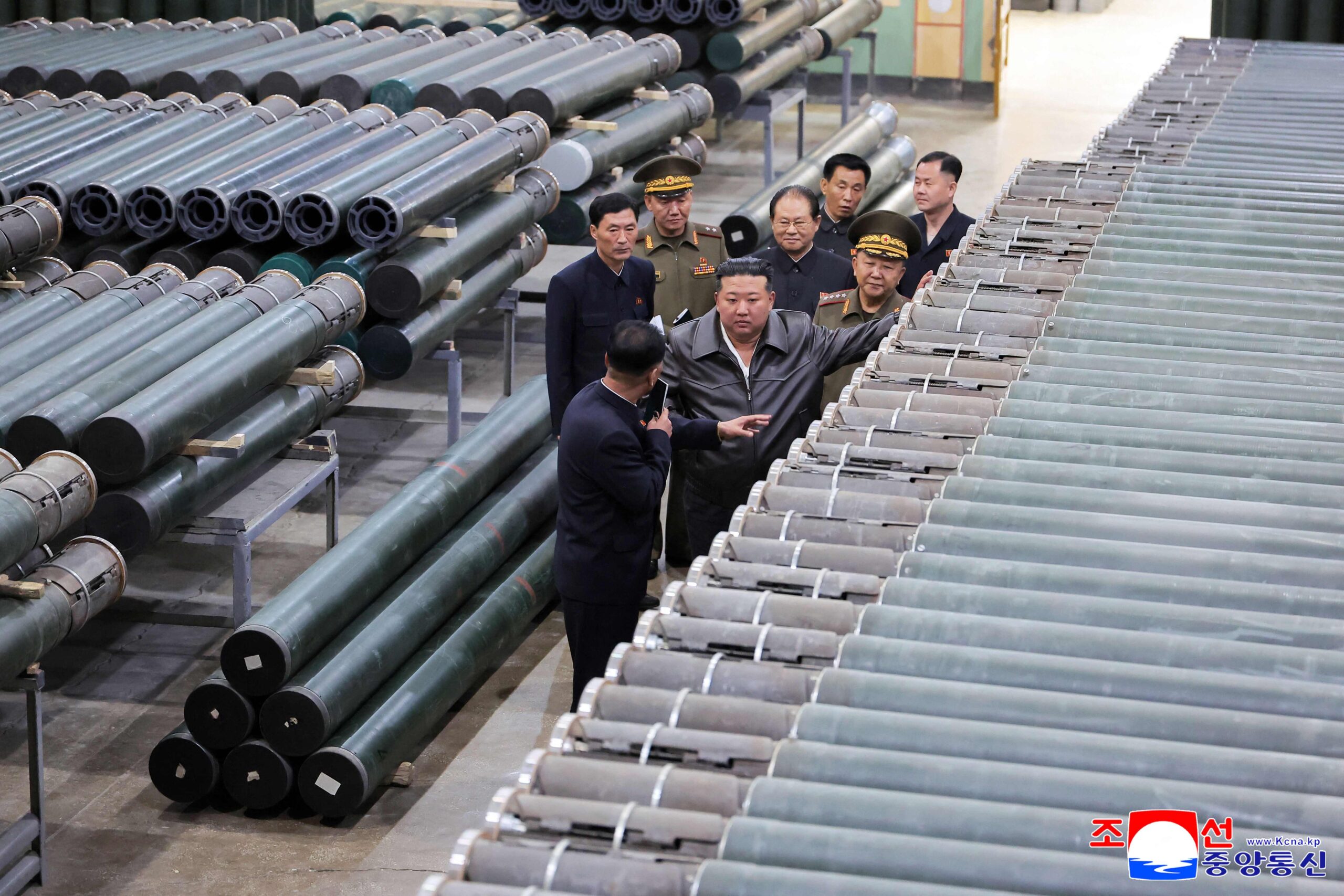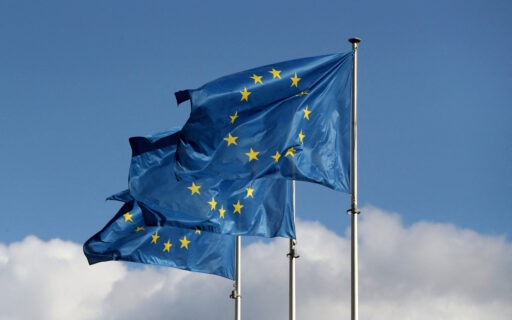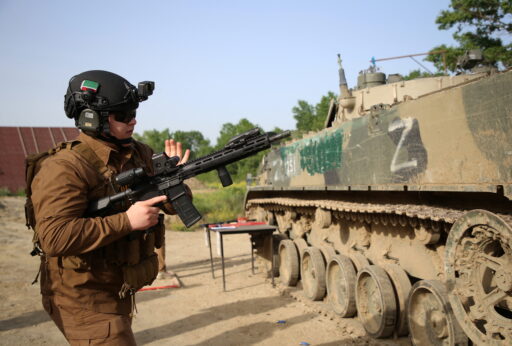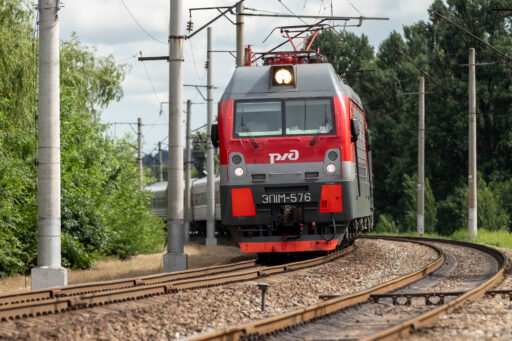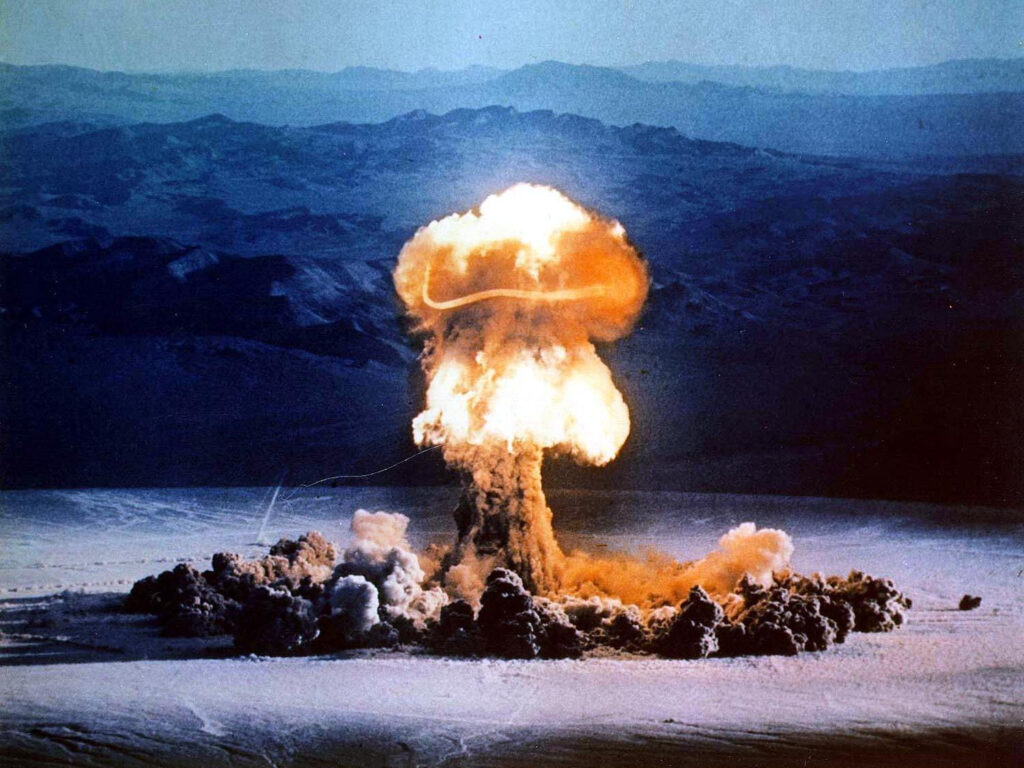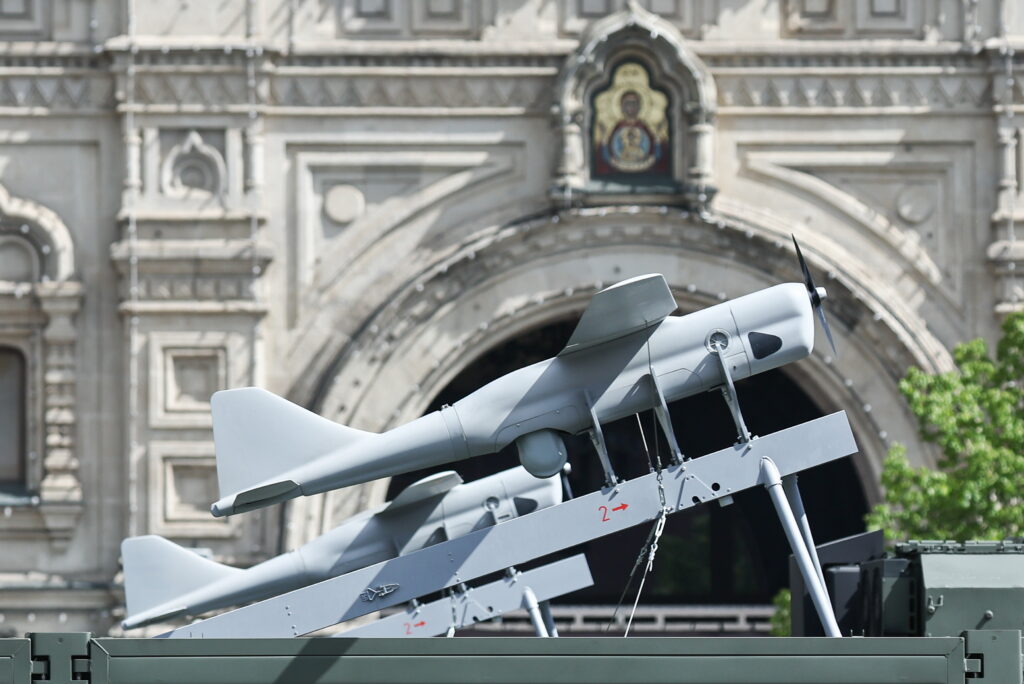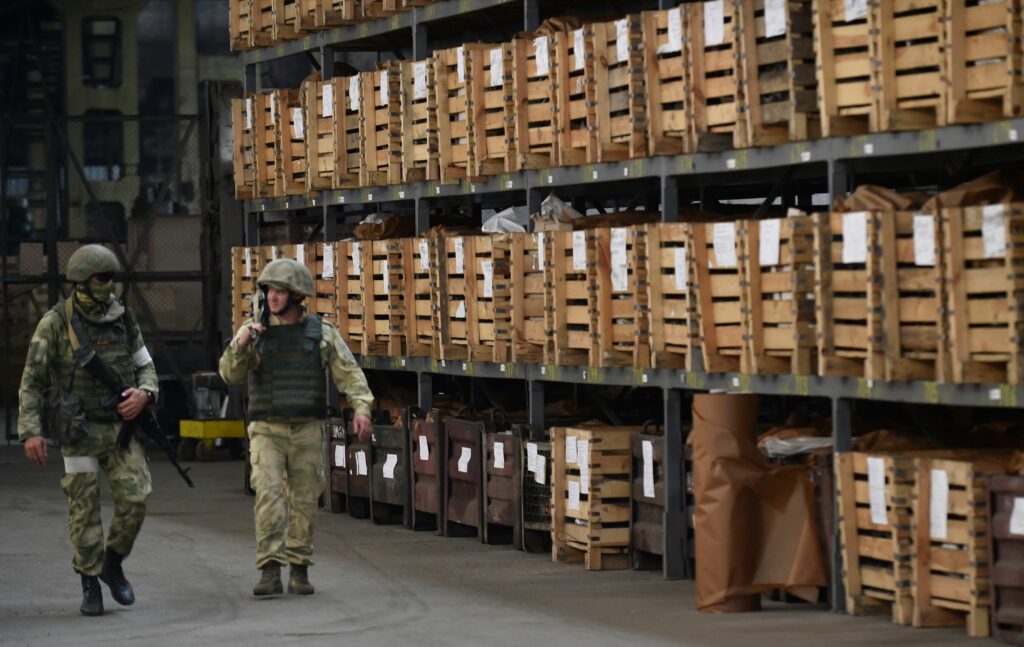Russia possesses the material capacity to expand military cooperation with both North Korea and Iran, despite sanctions targeting the companies and vessels involved. Russia maintains a relatively robust maritime military logistics capacity to transport equipment to Russia via its fleet of ships used for global arms exports. However, the decision to deepen bilateral relations with Iran and North Korea is primarily driven by diplomatic and political considerations rather than material constraints. Notably, Russian military cooperation and synergy with North Korea are stronger than with Iran. The primary factor shaping future cooperation is Russia’s relationships with other major powers, particularly the United States, though heightened tensions with European countries could further complicate the use of foreign troops.
Russia’s Arms Fleet
Russia maintains a robust capacity to transport equipment and troops as needed, utilizing a large number of military transport aircraft and maritime vessels. While data on military transport aircraft is limited, data from U.S. sanctions designations, cross-referenced with open-source maritime tracking software, identifies at least 24 unique vessels operated across multiple corporate entities. These vessels’ historical movements align with Russia’s licit and gray-market arms transfers. Despite U.S. sanctions, these vessels continue to visit Russia’s arms-importing and -exporting partners with only a relative pause compared to pre-war activities.
For time-sensitive transfers, Russia can utilize its fleet of Ilyushin-76 transport aircraft. Due to the dangers of flying near the front lines, these aircraft operate in rear areas in a supporting role. Satellite imagery has confirmed their presence in North Korea, and The New York Times has reported that these planes have been used to transport North Korea’s elite troops to European Russia. Ukraine’s security services have also claimed that this fleet transports Shahed drones manufactured in Iran to Russia.
Given the geographical realities, it is difficult, if not impossible, to use sanctions to disrupt these aircraft operations. These military aircraft can fly from Russia to Iran or North Korea without traversing the airspace of hostile states. The Convention on the Legal Status of the Caspian Sea, an agreement among Russia, Iran, Azerbaijan, Kazakhstan, and Turkmenistan, governs the use of airspace in the region. Given Russia and Iran’s diplomatic and economic leverage over the other three parties, it is unlikely that any diplomatic protests would arise over flights transporting military goods between Iran and Russia.
Russia employs networks of vessels and companies to conduct both licit arms transfers and those it seeks to conceal. These vessels, primarily based near Saint Petersburg, the Black Sea, and the Caspian Sea, have experienced a decline in activity since the onset of the war and Russia’s withdrawal from Syria. However, full movement data for these vessels is increasingly difficult to obtain, as many have begun operating without their AIS safety transponders activated, following increased reporting on their activities.
One network employing this tactic is Transmorflot, a Russian corporate entity involved in the country’s licit global arms trade. Its activities have been widely reported since the war began. This network includes some of the same vessels accused of facilitating arms transfers from North Korea. Some of these vessels are roll-on, roll-off (Ro-Ro) ships, which are used for global arms shipments because they can transport heavy equipment such as artillery and infantry fighting vehicles. There is currently no open-source evidence that the Ro-Ro vessels in this network have been used to transfer heavy equipment from Iran or North Korea.
Unlike vessels involved in energy sanctions evasion, Russia’s arms trade vessels almost exclusively operate under the Russian flag, providing diplomatic cover. France disregarded this on at least one occasion, impounding one of these ships in the early days of the war. Since then, Western countries have not acted as aggressively, opting instead for diplomatic measures to publicly name and shame countries that continue to engage with Russia using these vessels. Countries like China, which allow these arms transfer vessels to use their ports, undermine broader efforts to restrict their movements and Russia’s ability to generate revenue through global arms exports.
Calculus for Greater Russian-Iranian Cooperation
One of the largest obstacles to a deeper Russian-Iranian strategic partnership is the warming relationship between the Trump administration and Putin’s regime. Putin cannot afford to let the strategic benefits of improved U.S.-Russia relations be jeopardized by factors beyond his control, such as the ongoing confrontation between Washington and Tehran. Russia could again serve as an arbiter in Iran’s nuclear standoff with the United States, but U.S.-Iran tensions extend beyond the nuclear issue to include Iran’s conventional missile program and other concerns.
Unless U.S.-Russia rapprochement under Trump fails precipitously, it is unlikely that units of Iran’s Islamic Revolutionary Guard Corps (IRGC) or regular army would be embedded with Russian forces, as North Korean units have been in Kursk Oblast. A more likely escalation would involve Russia acquiring weapons from Iran’s stockpile.
Providing missile systems from Iran to Russia would be fraught for two primary reasons. First, Iran faces pressure from the U.S. and Israel over its nuclear program and needs to maintain a level of deterrence against conventional attacks. Second, Iranian missile systems are primarily of domestic design. While these missiles could be useful for Russian troops, the brigades responsible for operating them would need to invest time and resources to learn the new systems. This might even require Iranian technical experts to assist in Russia, raising diplomatic stakes for both countries with minimal tactical battlefield benefits.
One area of cooperation less likely to spark a diplomatic crisis is military production, particularly tanks. Iran’s military equipment includes legacy Soviet designs like the T-72 tank, weapons from the Shah’s era, and domestic designs. Iran’s Bani-Hashem Armour Industrial Complex has unveiled a production line to upgrade its T-72 tank fleet. This facility, built with Russian assistance in the 1990s for licensed production of T-72s and Soviet-designed infantry fighting vehicles, collapsed after diplomatic pressure from the Clinton administration.
Iran has since shifted to producing the domestic «Karrar» tank, which Iranian sources admit is heavily inspired by Russia’s T-90 and T-72 tanks. The Karrar fires the same 125 mm rounds as Russian tanks. Production began after talks for Iran to purchase T-90s from Russia broke down. If these tanks are indeed similar, as Iranian military journalists claim, Russian troops would require less training to operate them, and there would be less need for specialized Iranian personnel in combat zones. The key questions are whether Iran has sufficient tanks to spare and whether its domestic production can increase in a timely manner.
If Russia sought greater Iranian involvement in the war, either through increased equipment transfers or the deployment of Iranian military personnel, it could do so. Russia already conducts regular «dark» maritime activity in the Caspian Sea, particularly with the port of Amirabad. Open-source data on maritime movements show that much of this activity in the Caspian has been facilitated by Transmorflot, based in Astrakhan.
The geographic proximity to southern Russia and the number of vessels in the Caspian Sea suggest that large-scale equipment transfers from Iran could be easier and more economical than maritime transport from North Korea, which reportedly relies on rail transport from Russia’s Far East. The distance from port of Astrakhan to Rostov-on-Don is significantly shorter. A more critical question, unanswerable with open-source data, is whether the ports in Russia and Iran on the Caspian Sea could accommodate large-scale material transfers.
Russia faces significant challenges in its defense industry due to a constrained labor pool and inflation. Iranian labor for producing munitions or Russian weapons under contract is an attractive option in theory. The question is which products would be involved. Production of Shahed drones, originally an Iranian design, is an obvious example, but only if Russia’s domestic production capacity is insufficient. At the time of writing, Russia is expanding its military production facility in Alabuga rather than relying on Iranian production. Establishing new military production lines requires years of planning, and Russia would need to weigh whether short-term needs justify the long-term costs of sharing upgraded Shahed designs with a third country and potential competitor in the global arms market.
The decision to increase Iran’s involvement in the war is primarily political. While there is clear military utility in having more troops and weapons, increased Iranian involvement would need to be weighed by both countries against the inevitable backlash from the U.S. and Europe.
Calculus for Greater Russian-North Korean Cooperation
Several factors make the Russian-North Korean military partnership mutually beneficial. North Korea gains opportunities to test its military equipment and troops in modern warfare, access technology transfers, and shed its image of international isolation. Russia secures a source of equipment and manpower familiar with a Soviet-legacy model of warfare, allowing it to sustain the war without resorting to general mobilization of Russian society.
The North Korean army is deeply rooted in Soviet heritage. North Korea’s military and political system is fundamentally a product of the Soviet Union under Stalin, with collaboration dating back to the Korean War. North Korea has endured decades of political isolation and sanctions. Even before 2024, the two countries shared a nascent military relationship. Kim Il-sung, North Korea’s founder, fought in the Soviet Red Army’s 88th Separate Rifle Brigade. The Soviet Union was a key patron of Kim Il-sung and communist North Korea in its early years. During the Korean War, Soviet advisors and technicians operated in North Korea, similar to the U.S. presence in Ukraine today.
In its earliest forms, the North Korean military relied on Soviet weapons left over from World War II. Large-scale domestic production of weaponry began in the late 1960s and early 1970s. A core feature of North Korea’s defense industry has been reverse-engineering foreign, primarily Soviet bloc, weapons. North Korea has refined this capability over decades, using it to develop everything from tanks to ballistic missile systems.
While Kim Jong-un’s military parades have showcased more modern designs, North Korea maintains a large number of tanks derived from the T-72 and older models. The Chonma-216 and newer Songun-915 tanks use a chassis derived from the T-72. Although the exact production capacity is unknown, North Korea’s main tank factory, the Guseong Tank Factory, doubled in size between 2020 and 2023.
In the 2010s, Kim Jong-un oversaw a major modernization of the Korean People’s Army (KPA), described by some Korean military experts as «micromanagement.» This included changes to military doctrine and a modernization program focused primarily on North Korea’s nuclear deterrent. Following multiple successful nuclear and missile tests, Kim shifted focus to developing conventional capabilities, such as kamikaze drones.
Even decades after the Soviet Union’s collapse, the KPA Ground Force retains a clear Soviet military heritage. Its organizational structure (corps, divisions, brigades) and combined-arms operations concept are fundamentally based on Soviet teachings from the Cold War. Many KPA field manuals and training materials are believed to be derived from translated Soviet or Russian doctrine, updated with lessons from recent conflicts. This results in an army that emphasizes massive artillery barrages and Soviet-style tanks.
North Korea has built on this Soviet-era military knowledge to address the specific conditions of the Korean Peninsula. A war against South Korea would share similarities with the Russia-Ukraine war, requiring infantry to overcome fortified defensive positions under constant artillery fire and drone surveillance. Such a war could devolve into a years-long attritional conflict in challenging terrain, much like the first Korean War. North Korea has only engaged in skirmishes with the South under Kim Jong-un, making lessons from Ukraine highly valuable for achieving Kim’s military modernization goals.
For Putin’s regime, North Korea provides two critical resources for attritional warfare: manpower and material. Russia’s constrained labor pool and inflationary pressures limit its ability to expand its military and defense industry capacities.
The logistics of transporting and equipping North Korean troops and equipment are relatively straightforward. Non-elite troops are transported by sea from North Korea to Vladivostok, then transferred to the front or provided additional training. Russia has reportedly been training North Korean troops at locations in its Far East. Artillery shells and other equipment are shipped from North Korea to Primorsky Krai by sea and then transported overland by rail.
Kim Jong-un’s reign has seen significant investment in factories producing missile systems and other aerospace weapons. While less is known about North Korea’s expansion of facilities for munitions and other equipment, transferring these materials to Russia in exchange for capital would benefit North Korea more than Russia. If Russia sought to expand production, it would be more logical to do so domestically and use North Korean labor for less technologically intensive tasks or as construction workers for new facilities. North Korea has publicly discussed sending laborers to rebuild parts of the Donbas.
Calculus of Introducing More Foreign Troops
So far, foreign troops in Russia have operated under Russian command. Russia has a history of fighting coalition wars, with the most relevant recent model being Soviet control over Warsaw Pact militaries. In the event of greater foreign military involvement in Ukraine, Russian commanders would likely seek to maintain control over these forces rather than allow them to operate independently.
Currently, North Korean troops have reportedly been embedded with Russia’s VDV (airborne forces) and naval infantry. If the number of North Korean troops increases, Russian commanders will need to make decisions about command and control. With relatively small numbers, Russia can integrate these troops into Russian formations. However, a broader influx of tens of thousands of troops would require a different approach. Would these troops continue to fight within Russian units under Russian officers, or would they operate as distinct North Korean units? If the latter, would they be led by North Korean officers with Russian advisors, or remain under Russian command?
Basing and arming larger numbers of foreign troops is less a logistical challenge than a political one. Allowing foreign troops to operate independently on Russian or Ukrainian territory would create friction. Permitting them to function under their own commanders would be a blow to Russia’s prestige, both politically—raising questions about why Russia needs foreign troops to win—and for the morale of Russian commanders. These commanders would also need to address the potential misuse or mistreatment of foreign forces, a less pressing concern when dealing with their own troops.
Given the relative lack of diplomatic pushback to small numbers of North Korean troops, Russia may find it tempting to expand in this direction rather than introduce troops from other countries like Iran. Russia faces manpower shortages, and any increase in forces puts pressure on Ukraine. However, a significant increase in North Korean troops could prompt some NATO countries, such as Poland, to reconsider their stance on direct intervention in the conflict. As the U.S. reduces its influence in Europe and loses leverage over the foreign policy decisions of some NATO allies, Russia risks broadening the scope of the war.
